Welcome to our exploration of the 10 best beautiful places in Japan!
From the snow-capped peak of Mount Fuji to the historic temples of Kyoto, Japan offers a stunning array of breathtaking locations.
Each site reflects the country’s rich tapestry of natural beauty, culture, and tradition. Join us as we journey through these extraordinary destinations, each offering a unique glimpse into the heart and soul of Japan.
Whether you’re a nature lover, a history enthusiast, or simply searching for beauty, these places will surely inspire and amaze you.
- Recommended BEST Tours in Japan (FREE Cancellation)
- Recommended BEST Tours in Tokyo
- Recommended BEST Tours in Osaka
- Recommended BEST Tours in Kyoto
- Recommended Tokyo Hotels
- Recommended Osaka Hotels
- Recommended Kyoto Hotels
- Cheap Flights, Airline Tickets & Plane Tickets (TRIP.COM)
Number 10: Hakone.
Starting our countdown at number 10, Hakone is a picturesque resort town located in the mountainous region of Kanagawa Prefecture, just south of Tokyo. Renowned for its onsen (hot springs), serene Lake Ashi, and stunning views of Mount Fuji, Hakone offers a perfect retreat for those seeking relaxation amidst natural beauty.
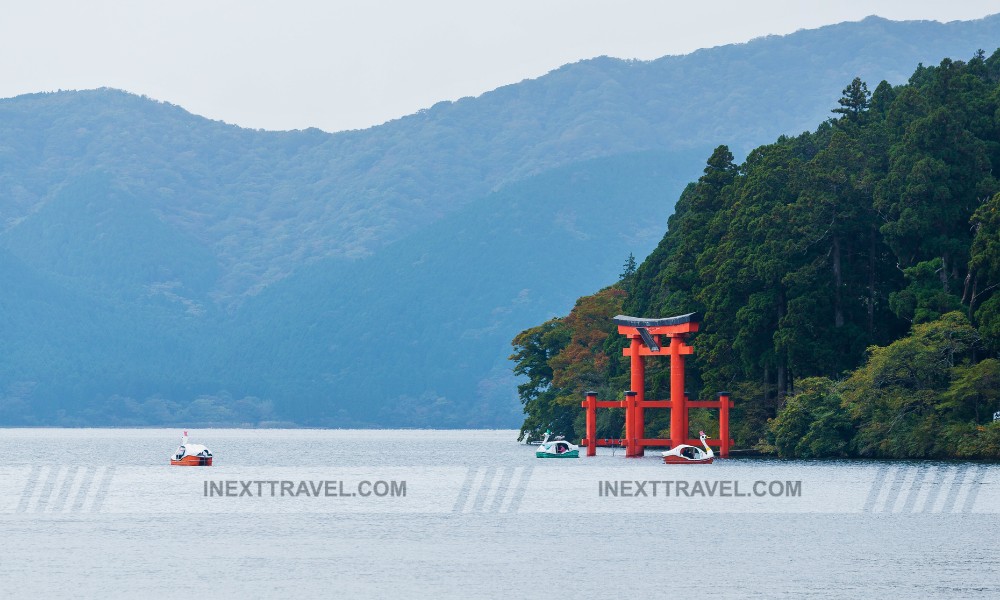
But it’s not just about the scenery. Hakone also provides unique experiences like therapeutic hot springs and peaceful boat rides, making it a destination that will surely pique your interest.
This idyllic locale provides a plethora of therapeutic hot springs where visitors can unwind in mineral-rich waters that have been celebrated for centuries for their health benefits.

Lake Ashi, a crater lake formed by a volcanic eruption nearly 3,000 years ago, adds to the area’s scenic charm. Tourists can enjoy peaceful boat rides across its calm waters, offering picturesque views of the mountains and the iconic silhouette of Mount Fuji in the distance. The lake is also a popular fishing spot, enhancing its allure as a leisure destination.

Moreover, Hakone boasts a rich artistic heritage, which is showcased in several museums and galleries around the area. The Hakone Open-Air Museum, for instance, combines impressive sculpture collections with beautiful landscapes, providing an inspiring cultural experience in a stunning outdoor setting.
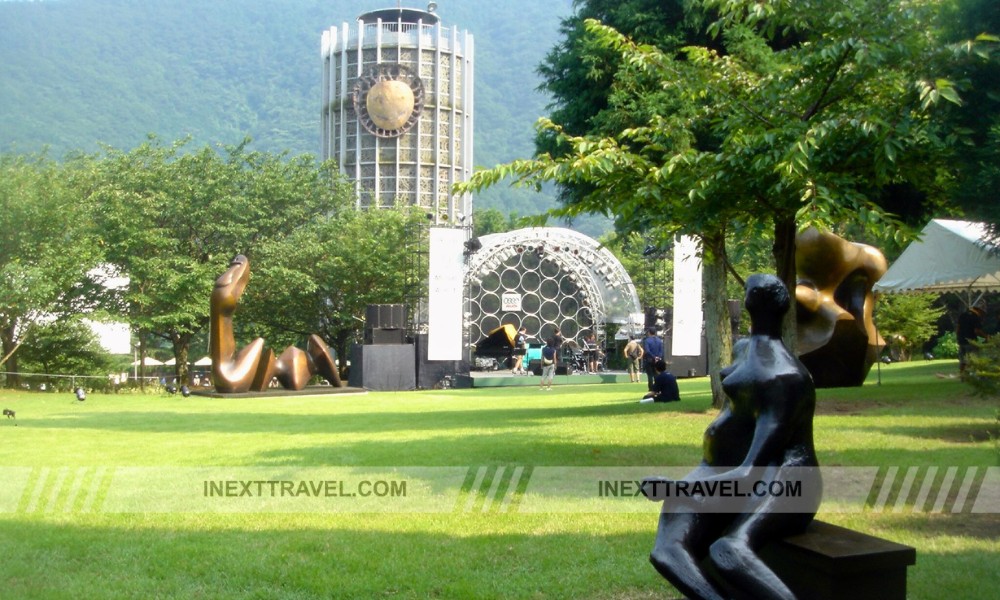
For those with a keen interest in history and architecture, the Hakone Shrine, nestled at the lake’s edge, is a treasure trove of tradition and historical depth. With its torii gate standing prominently in the lake, the shrine creates a serene and mystical atmosphere that is particularly magical at dawn or dusk. Exploring the shrine’s history and architecture will surely deepen your connection with this enchanting place.
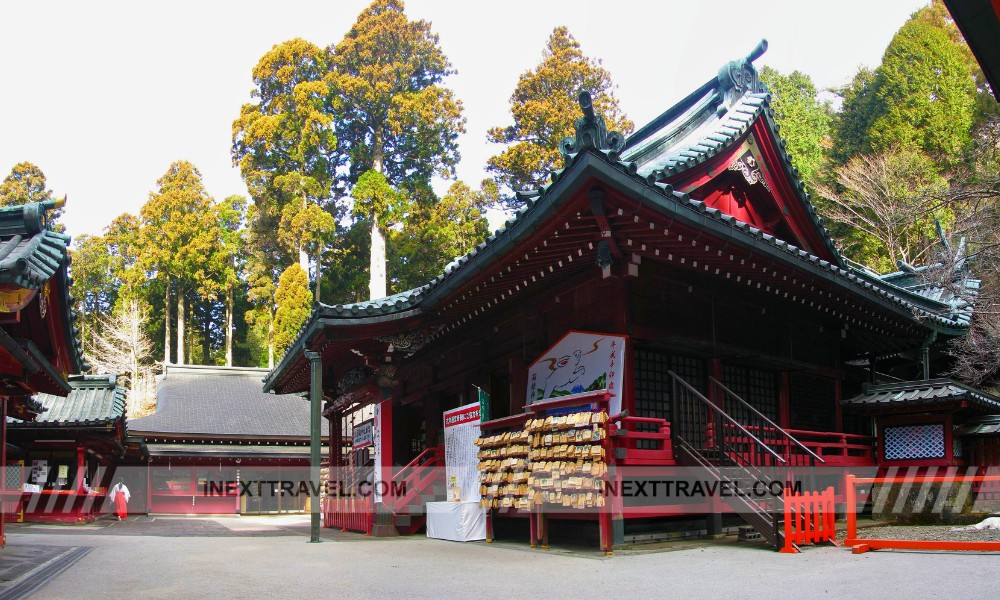
Whether you’re soaking in a hot spring, exploring lush trails, enjoying a leisurely boat ride on Lake Ashi, or experiencing the local culture, Hakone encapsulates a blend of relaxation, natural beauty, and Japanese tradition.
This makes it a must-visit destination for anyone looking to escape the hustle and bustle of city life and immerse themselves in a more tranquil, rejuvenating environment.
Number 9: Nara.
At number 9, Nara, the first permanent capital of Japan, offers a unique and enriching experience that transports visitors back to an ancient era. Known for its historical monuments, tranquil gardens, and friendly deer that roam freely, Nara is a city that beautifully preserves the spirit and architecture of early Japan.
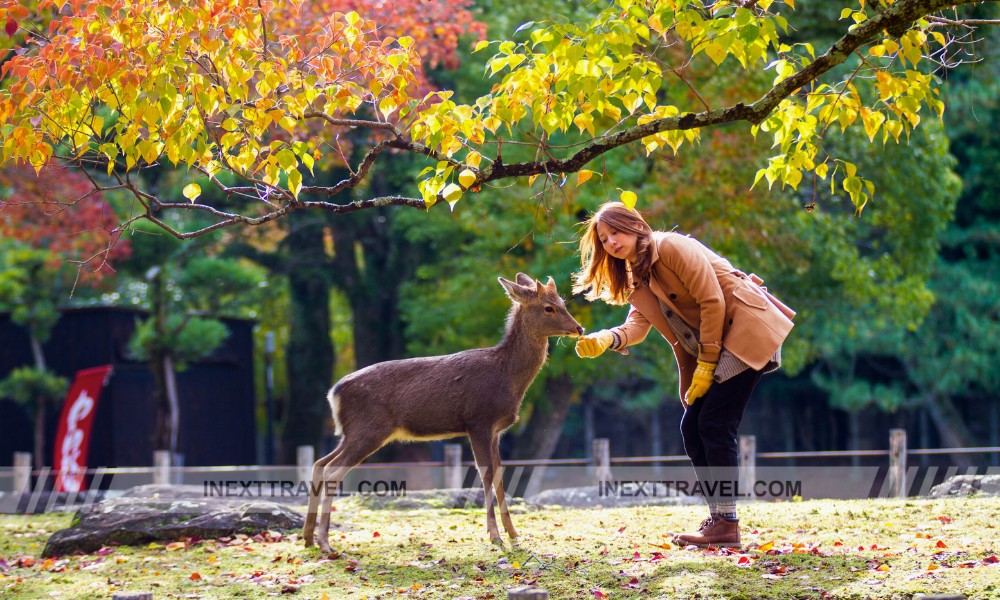
The centerpiece of Nara’s cultural heritage is Nara Park, a sprawling public park home to hundreds of freely roaming deer. Considered messengers of the gods in the Shinto religion, these deer have become symbolic of the city and interact gently with visitors who feed them special crackers sold around the park. This interaction between humans and deer adds a charming and almost magical quality to the park’s atmosphere.
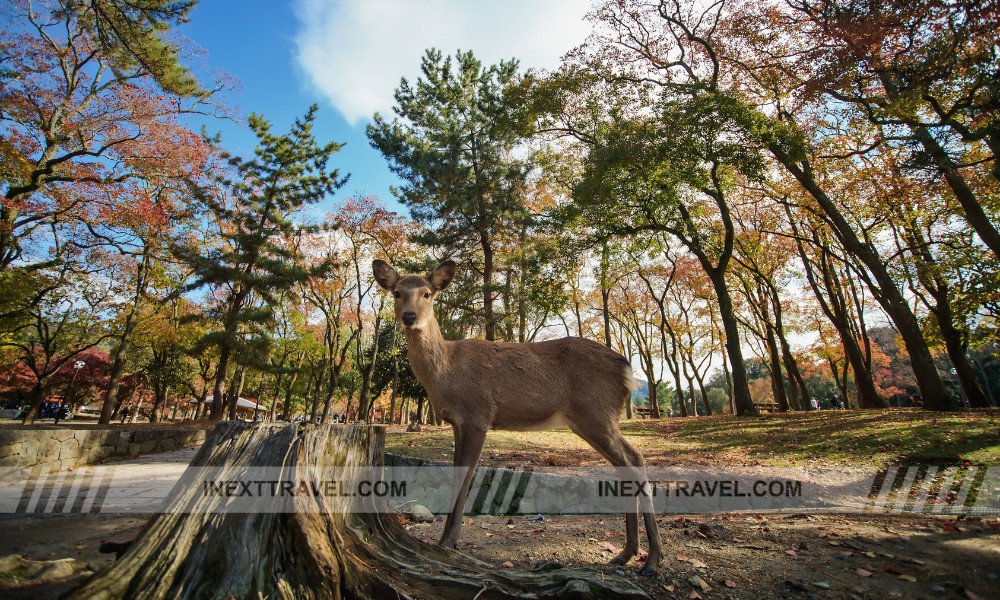
Nara is also famous for its impressive array of temples and shrines, among Japan’s oldest and most venerable. The most renowned among these is the Todai-ji Temple, which houses a colossal statue of the Buddha and stands as a landmark of Japanese Buddhist architecture. Built in the 8th century, Todai-ji is a pivotal place of worship and a testament to the artistic and cultural achievements of the period.
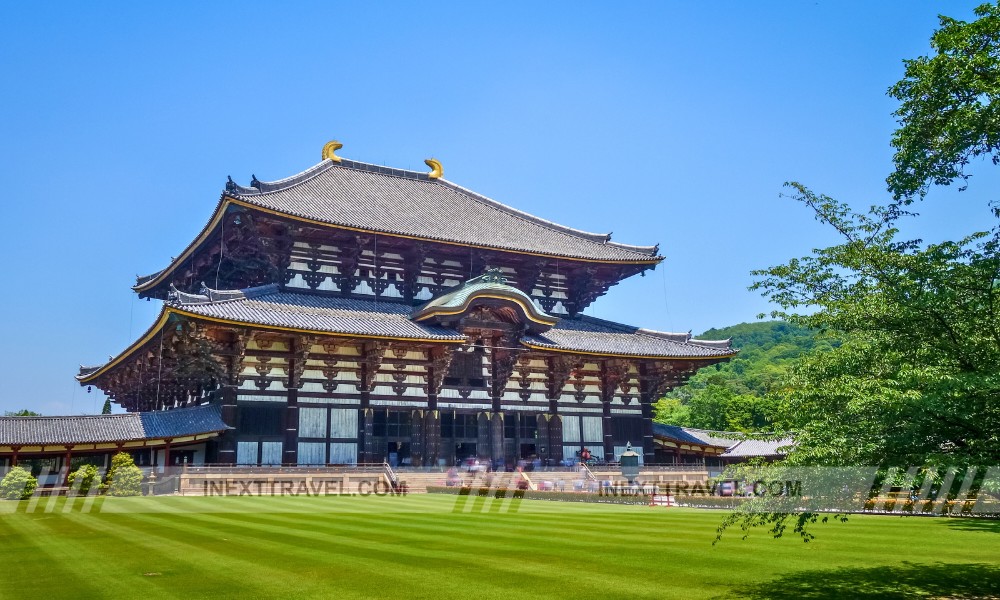
Another significant historical site is the Kasuga-Taisha Shrine, known for its hundreds of bronze lanterns that line the pathways. It creates an enchanting scene, particularly during the Lantern Festivals in February and August.
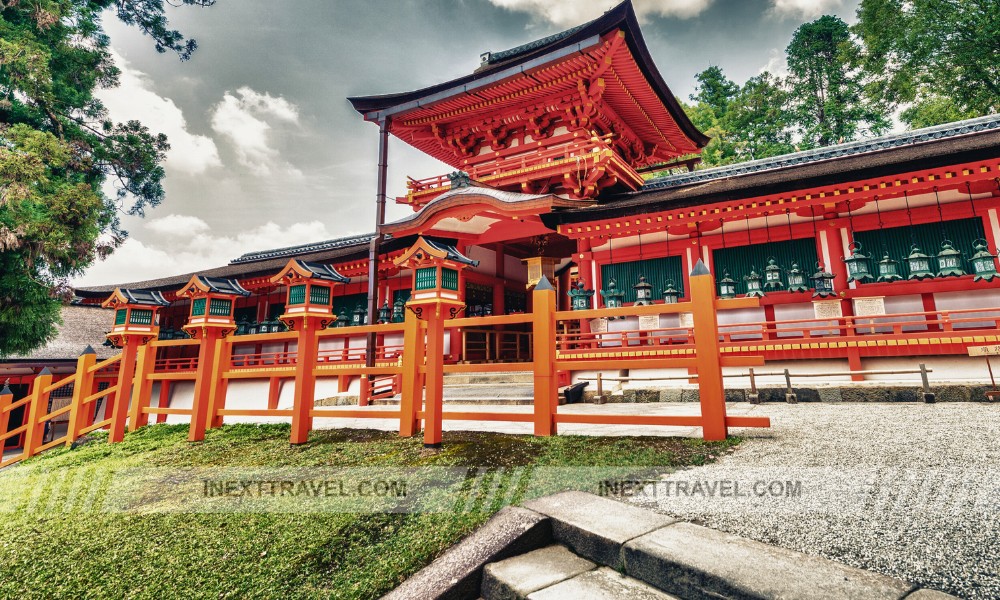
The shrine’s connection to the Fujiwara family, one of the most powerful clans in Japanese history, highlights Nara’s importance as a political and religious center.
Aside from its religious monuments, Nara’s traditional tea houses and old merchant districts offer a glimpse into the lifestyle of ancient Japan, with well-preserved buildings and authentic local cuisine.
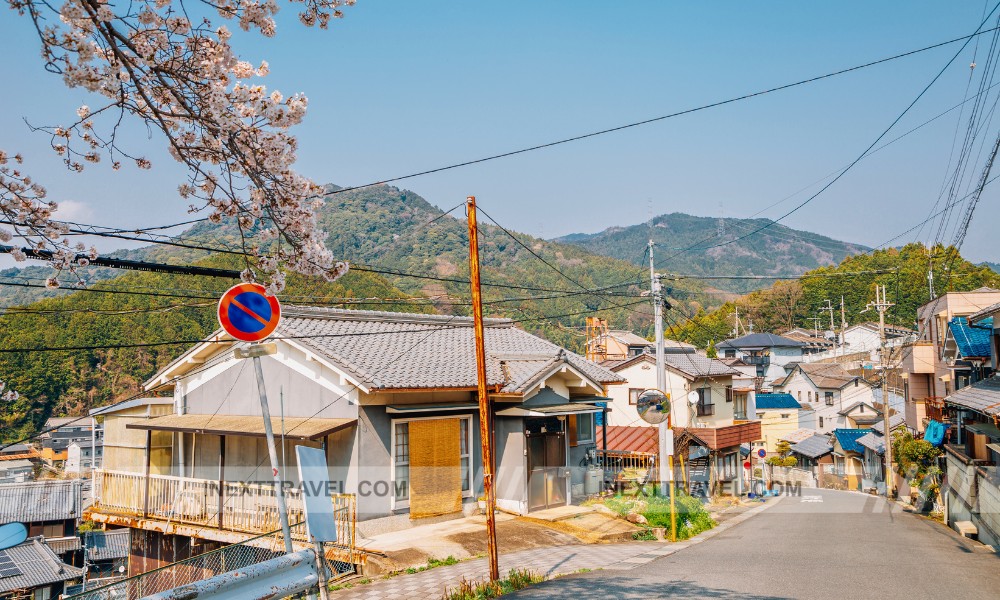
These elements unite to make Nara not just a city of historical importance but also a place of cultural immersion, where the past coexists with the present in serene harmony. This rich tapestry of history, culture, and nature makes Nara a must-visit for anyone seeking to experience the depth and beauty of Japan’s heritage.
Number 8: Kanazawa.
At number 8 on our list is Kanazawa, a city that encapsulates Japan’s serene beauty and rich history. Often referred to as a hidden gem, Kanazawa is renowned for Kenrokuen, one of Japan’s three most beautiful landscape gardens.
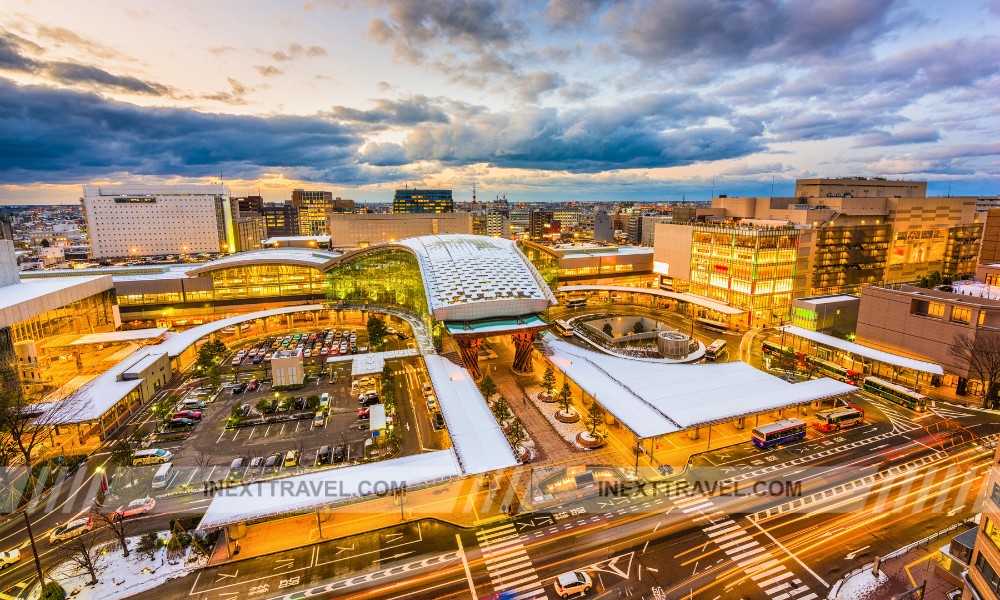
This expansive garden is celebrated for embodying spaciousness, seclusion, artifice, antiquity, watercourses, and panoramas. Designed and refined over centuries, Kenrokuen features streams, waterfalls, bridges, teahouses, and various plants and trees that display a different charm each season, from cherry blossoms in spring to fiery maple leaves in autumn.
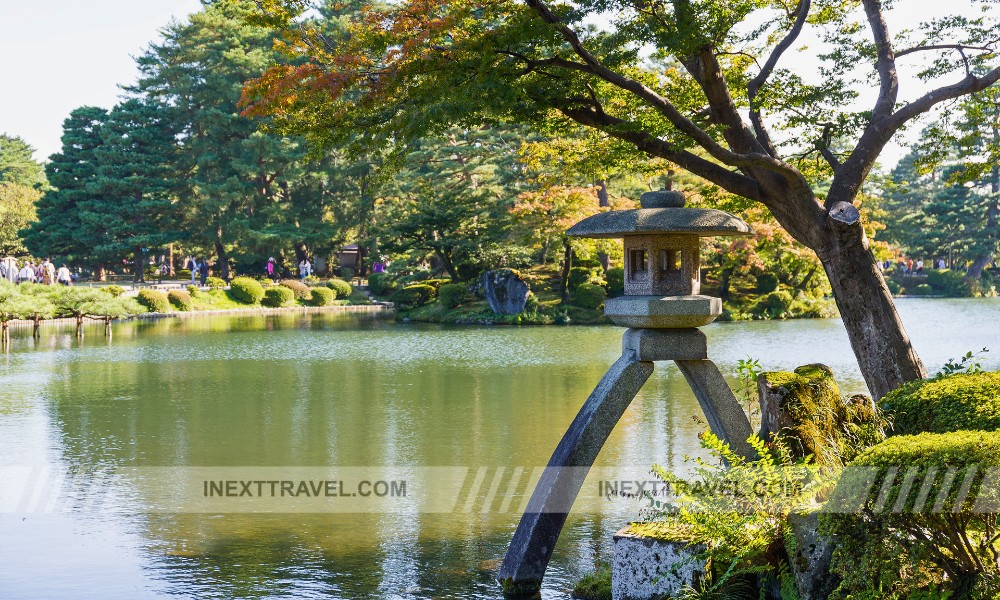
Kanazawa’s historical significance is further highlighted by its well-preserved districts, such as the Nagamachi samurai district and the Higashi Chaya district, one of Japan’s few remaining chaya (teahouse) districts.
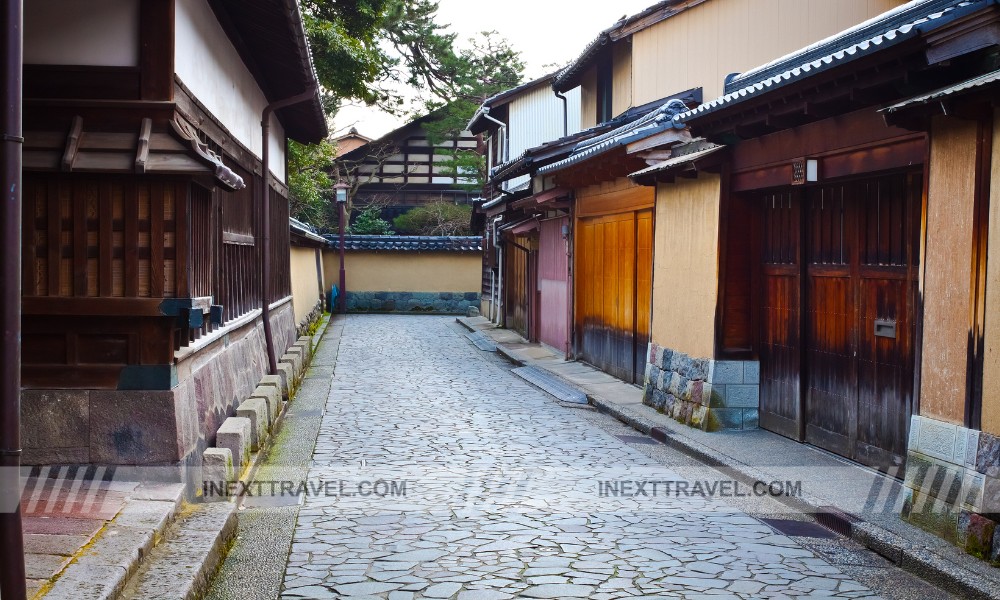
Here, visitors can wander through narrow lanes lined with beautifully preserved wooden buildings, including traditional teahouses where geisha have entertained guests with music and dance since the Edo period. These districts provide a tangible connection to Japan’s feudal past, offering a deep dive into the cultural and social dynamics of the samurai era.
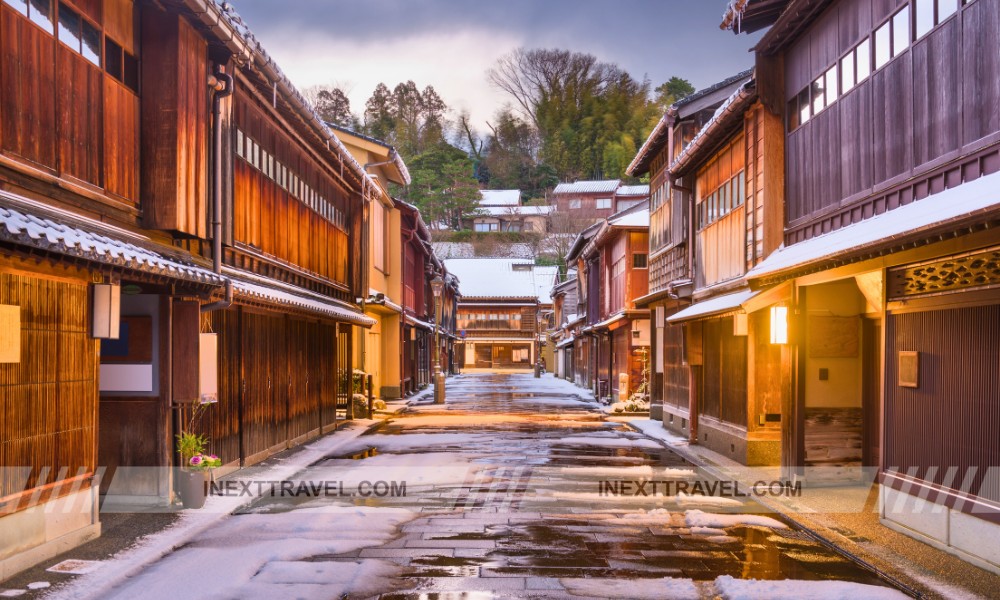
The city is also a vibrant center for contemporary arts and crafts, continuing its centuries-old tradition of craftsmanship. Kanazawa is famous for its Kaga yuzen silk dyeing, gold leaf work, and Kutani pottery, with numerous shops and workshops where visitors can observe artisans and purchase exquisite local handicrafts.
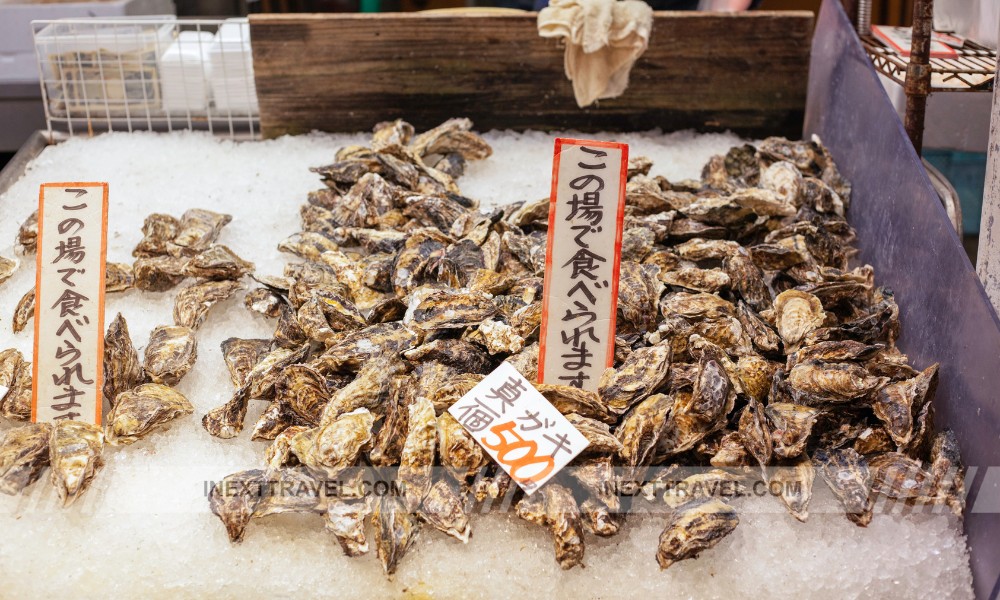
The 21st Century Museum of Contemporary Art, known for its innovative design and interactive installations, reflects Kanazawa’s dynamic art scene and provides a modern contrast to the city’s historical elements.
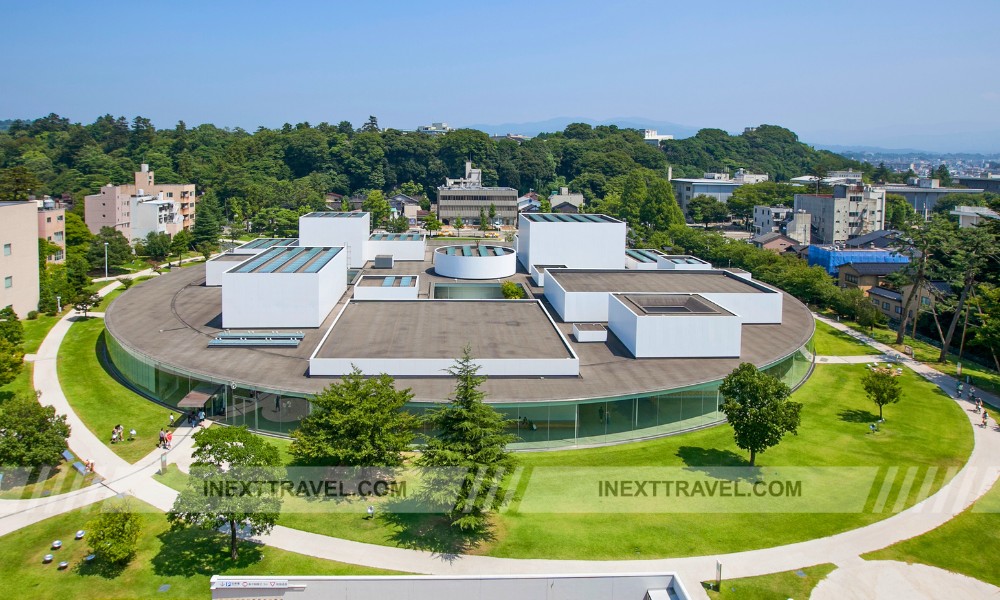
21st Century Museum of Contemporary Art Kanazawa Japan
Kanazawa’s ability to blend its rich history with a vibrant cultural scene makes it a fascinating destination that captures the spirit of Edo-period Japan while embracing the modern era.
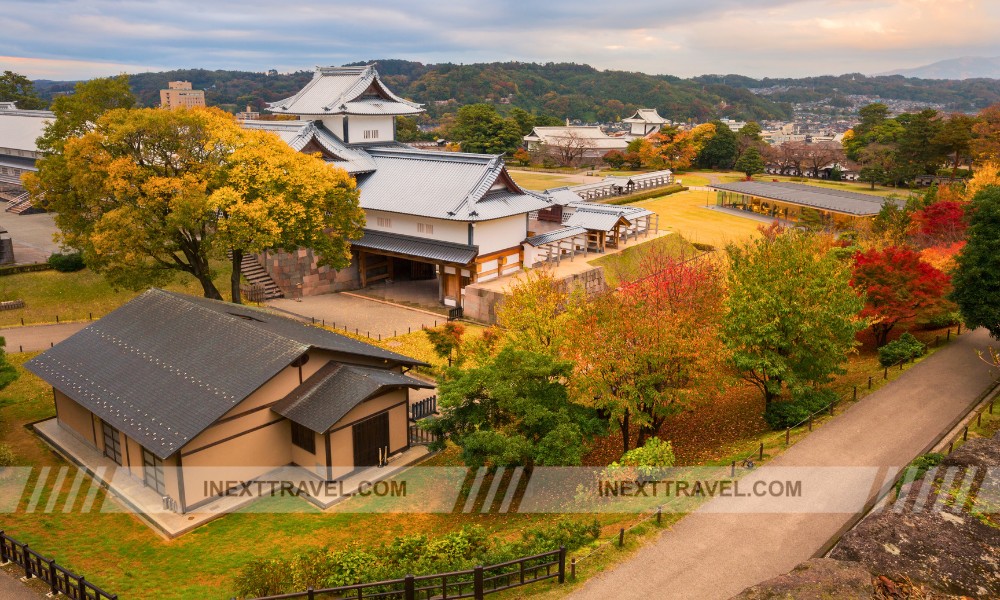
This blend of old and new, along with its stunning natural and architectural beauty, makes Kanazawa a must-visit for those looking to explore the depth and diversity of Japan’s cultural landscape.
Number 7: Kamakura.
At number 7, Kamakura presents a unique spiritual retreat steeped in rich historical and cultural significance. This coastal town, once the political center of medieval Japan, is now a serene getaway renowned for its giant Buddha statue, numerous Zen temples, and the scenic beauty of its surrounding forests and beaches.
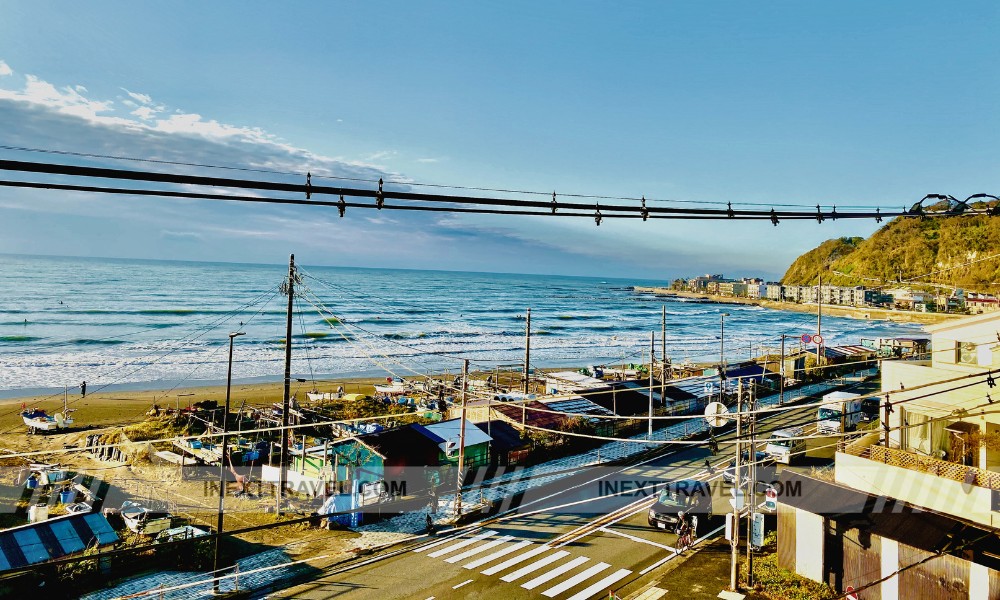
The centerpiece of Kamakura’s spiritual landscape is the Great Buddha (Daibutsu), a monumental outdoor bronze statue of Amida Buddha located at Kotoku-in Temple. This impressive statue stands approximately 13.35 meters high and is one of Japan’s most iconic Buddhist symbols, attracting visitors worldwide. The Great Buddha not only embodies the religious significance of Kamakura but also showcases the artistic mastery of the period.
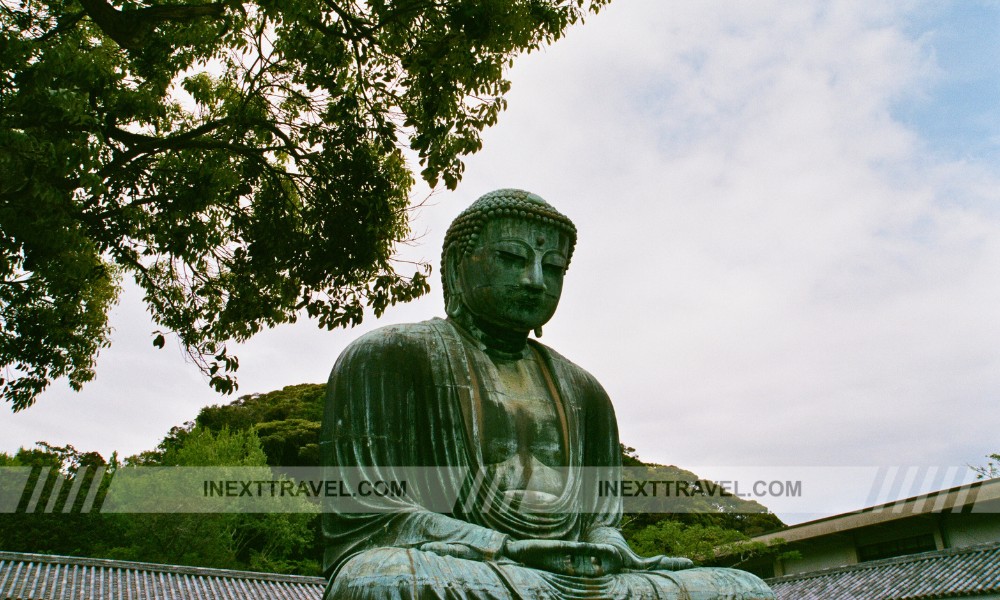
Surrounding the town are numerous Zen temples, each offering a slice of tranquility and a peek into the town’s vibrant past as a center of Japanese Zen Buddhism. Engaku-ji, one of the leading Zen temples, is known for its beautiful setting among the hills and historic artifacts, including a bell designated as a national treasure. Another significant temple, Hasedera, is famous for its wooden statue of Kannon and offers a panoramic view of the coastal city from its grounds.

Beyond its spiritual and historical sites, Kamakura is also blessed with natural beauty. The town is bordered by lush green forests and several beaches, making it a popular spot for hiking and relaxing by the sea.
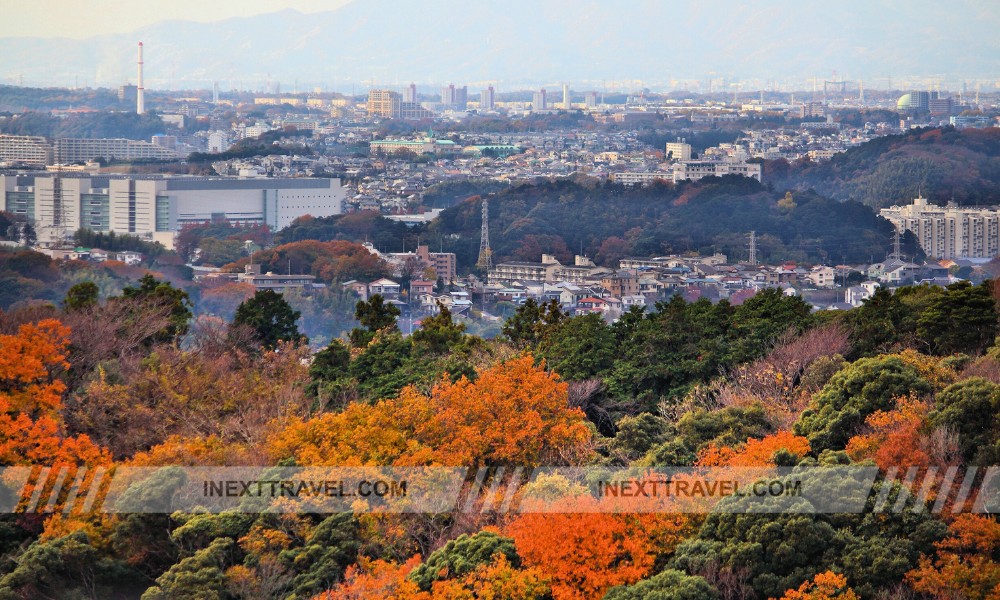
The contrast between the ancient temples and the natural surroundings adds to Kamakura’s serene and almost mystical atmosphere, making it an ideal destination for those seeking peace and reflection.
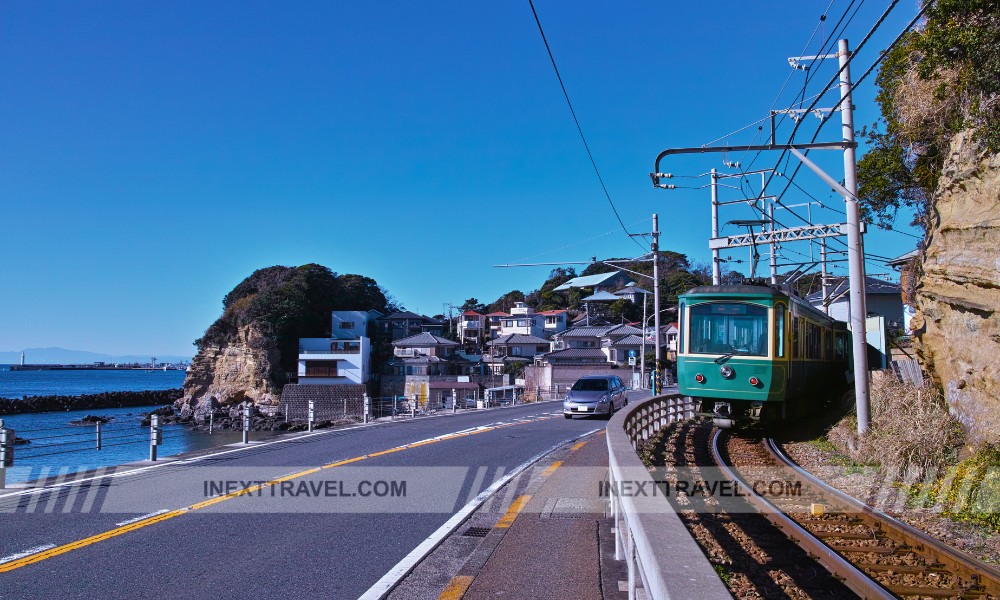
Kamakura’s blend of spiritual heritage, historical depth, and natural beauty creates a profoundly enriching visitor experience. It serves as a reminder of Japan’s medieval past and a continuing source of spiritual inspiration, making it a must-visit for anyone traveling to Japan.
Number 6: Nikko.
At number 6, Nikko offers a captivating blend of cultural heritage and natural splendor. Located north of Tokyo in Tochigi Prefecture, Nikko is celebrated for its intricate and lavishly decorated shrines and temples alongside breathtaking mountainous landscapes that change vividly with the seasons.

Nikko is most famous for Toshogu Shrine, a UNESCO World Heritage site and a stunning example of Edo-period architecture and artistry. This shrine complex is dedicated to Tokugawa Ieyasu, the founder of the Tokugawa shogunate. It is known for its elaborate carvings, including the famous “See no evil, speak no evil, hear no evil” monkey carvings. The Yomeimon Gate, a particularly striking feature, is adorned with more than 500 wood carvings that depict traditional stories and motifs in incredible detail.
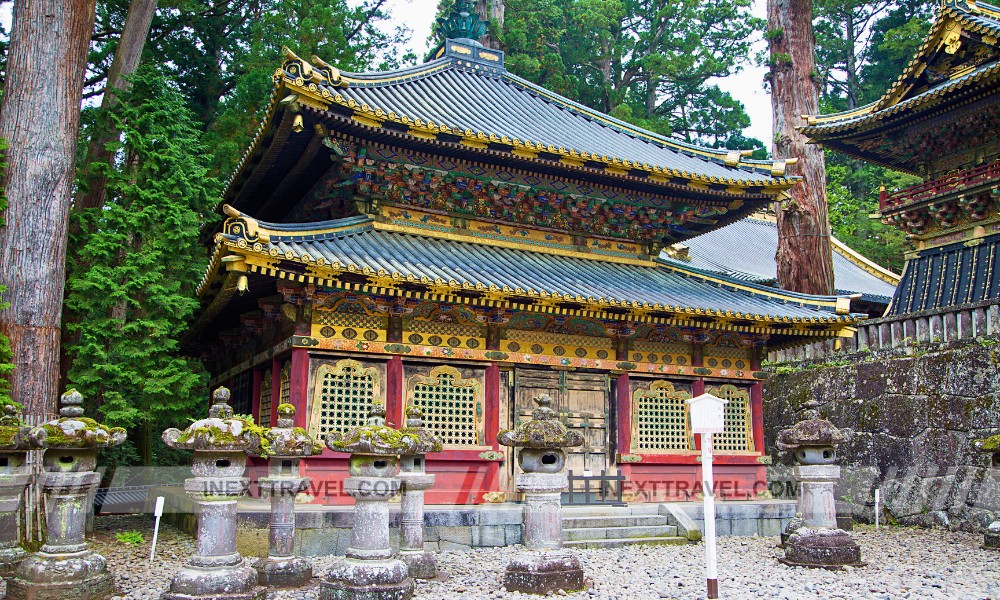
Beyond the shrines, Nikko’s natural environment offers lush scenery and numerous natural attractions. The area is part of Nikko National Park, which encompasses lakes, waterfalls, hot springs, and hiking trails that allow visitors to interact with nature directly. The Kegon Falls, one of Japan’s most beautiful waterfalls, is a must-visit, with its water plunging nearly 100 meters against a backdrop of dense forest.
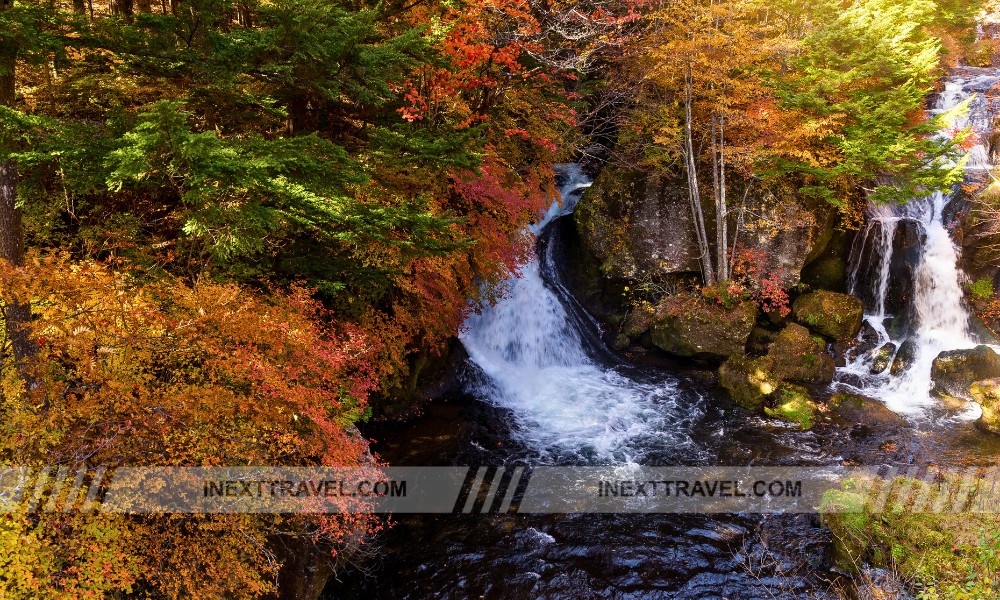
During autumn, Nikko becomes a popular destination for viewing koyo, or autumn leaves, as the landscape explodes in vibrant red, orange, and yellow hues. The combination of Nikko’s stunning fall foliage and rich cultural sites provides an enchanting experience, showcasing the harmonious relationship between Japan’s culture and natural environment.
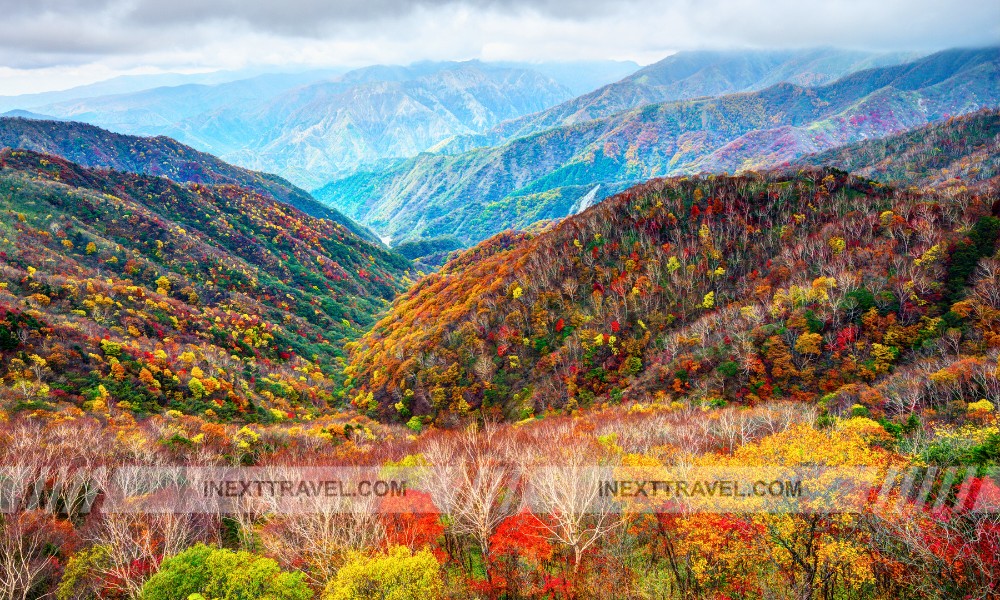
Nikko’s unique blend of spiritual heritage and natural beauty makes it not just a travel destination but a place of pilgrimage for those who appreciate architectural magnificence and natural wonders.
It’s a compelling showcase of the depth and breadth of Japan’s cultural and natural treasures, making it an essential visit for anyone exploring the rich tapestry of Japan’s history and landscape.
Number 5: Hokkaido.
At number 5, Hokkaido, Japan’s northernmost prefecture, stands out with its stunning natural beauty and distinct seasonal events. Known for its vast, unspoiled wilderness, Hokkaido offers various outdoor activities that make the most of its scenic landscapes, including skiing, snowboarding, hiking, and hot spring soaking.
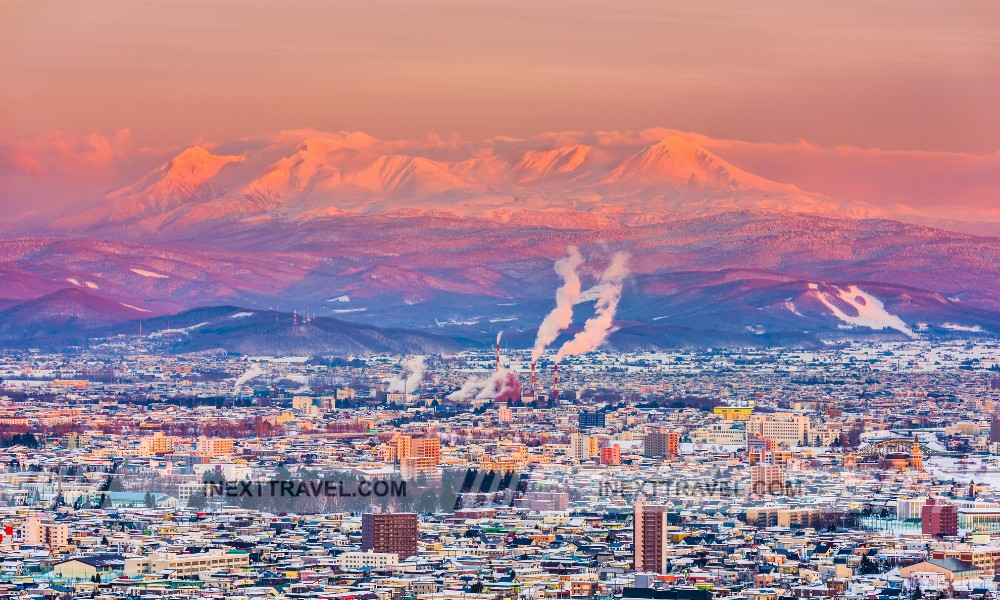
This island is a paradise for nature lovers and adventure seekers. It features national parks, volcanic plateaus, and tranquil lakes that remain relatively untouched by the hustle of urban life.
One of Hokkaido’s most enchanting highlights is the Sapporo Snow Festival, held annually in February. This world-renowned event transforms the city of Sapporo into a winter wonderland of ice and snow. Hefty, intricately carved ice sculptures line the streets and public spaces, drawing artists and tourists worldwide to witness the creativity and craftsmanship on display.
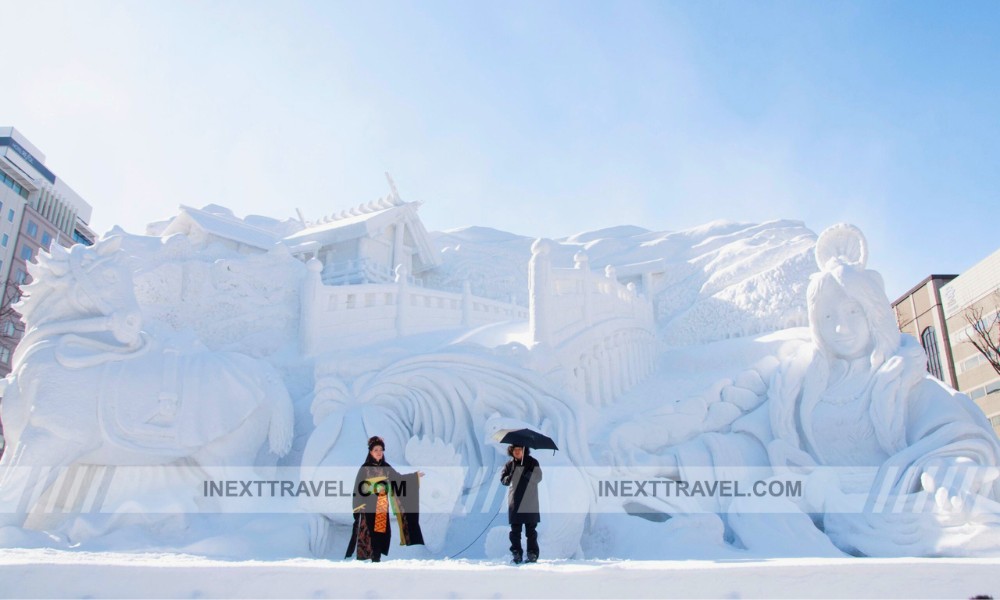
The festival showcases spectacular sculptures and offers concerts, snow slides, and local gourmet food stalls, providing fun and entertainment for all ages.
The island’s unique wildlife also adds to its appeal, with opportunities to spot indigenous species such as the red-crowned crane, one of the rarest cranes in the world.
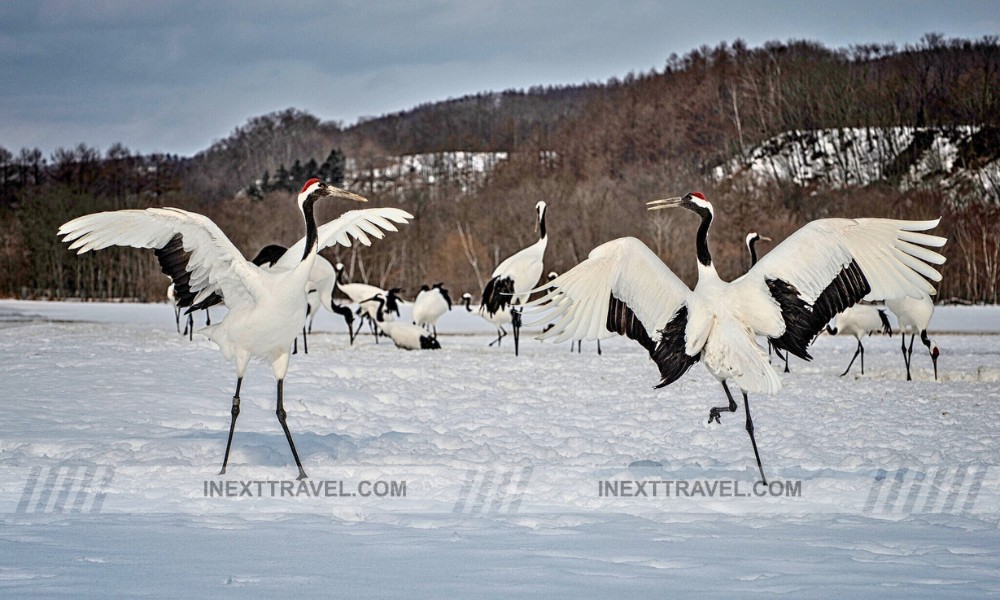
The Shiretoko Peninsula, a UNESCO World Heritage site, is particularly notable for its approach to conservation and the chance to view wildlife in its natural habitat. It offers a profound connection to the natural world.

In addition to its winter allure, Hokkaido is equally captivating in other seasons. In the summer, the lavender fields of Furano burst into vibrant bloom, creating a stunningly picturesque landscape that rivals the famous gardens of Europe.
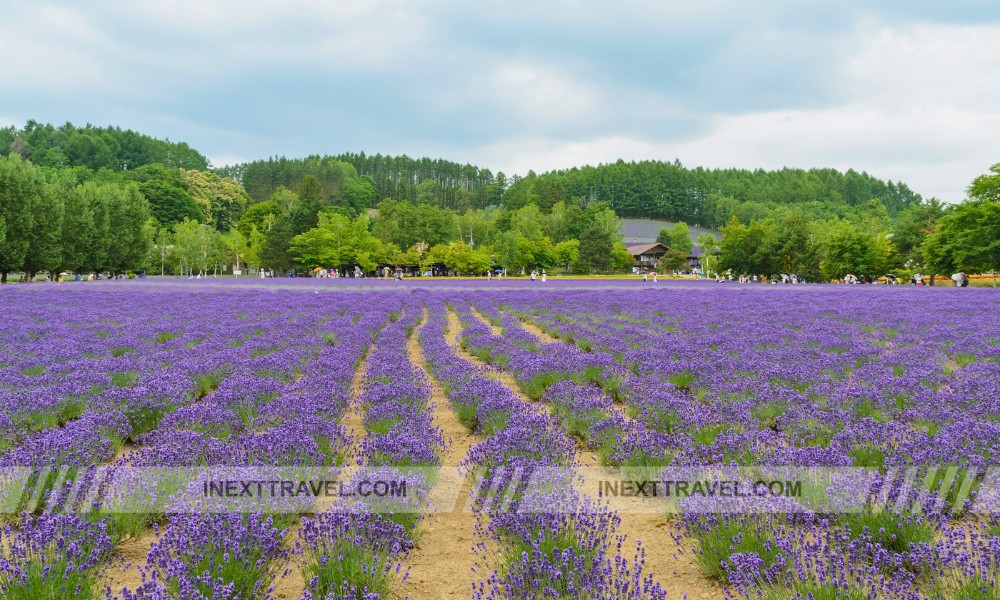
Similarly, autumn in Hokkaido is a spectacular display of colorful foliage, while spring brings mild temperatures and a slower pace of life, ideal for exploring the island’s rural beauty.
With its natural splendor, unique cultural events, and diverse wildlife, Hokkaido offers an unparalleled experience that captivates the heart of every traveler. It’s a place where the beauty of nature is preserved and celebrated, making it a must-visit destination in Japan.
Number 4: Kyoto.
At number 4, Kyoto is the quintessential reflection of traditional Japan, deeply rooted in centuries of history and culture. Known as the city of a thousand temples, Kyoto is the spiritual heart of Japan, boasting an array of ancient temples, serene Zen gardens, and majestic palaces that tell the stories of Japan’s rich past.
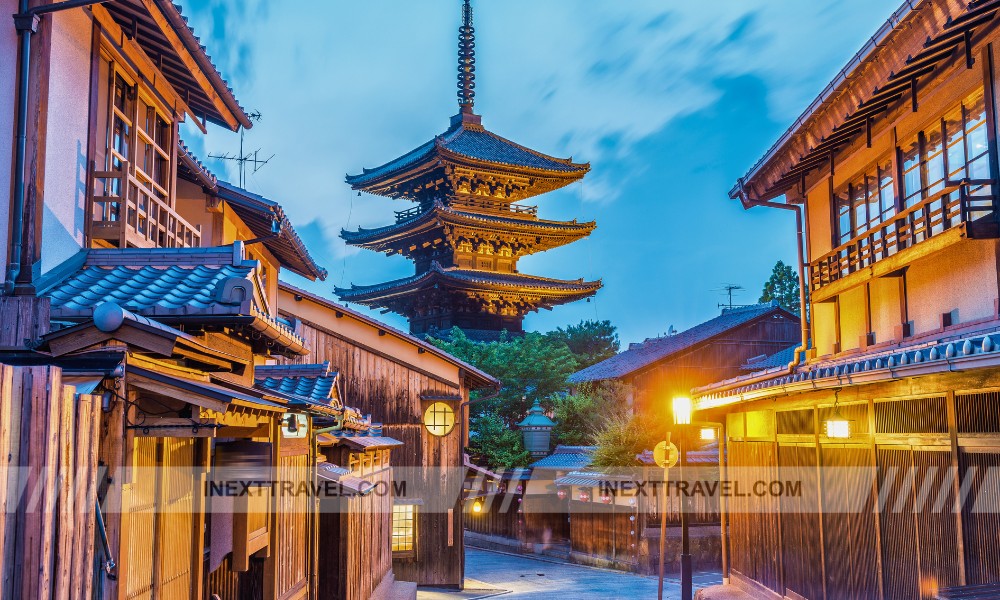
The city is renowned for preserving the age-old traditions of the geisha in the atmospheric Gion district, where these iconic figures of Japanese culture can be seen in their exquisite kimonos.

Kyoto’s teahouses, or chaya, offer an intimate glimpse into the refined world of tea ceremonies, where every movement and detail is practiced in mindfulness and art.
Kyoto’s architectural heritage is unparalleled. Structures such as Kinkaku-ji and the Golden Pavilion are covered in gold leaf and reflect beautifully in their surrounding pond, embodying the lavish aesthetic preferences of the era in which they were built.
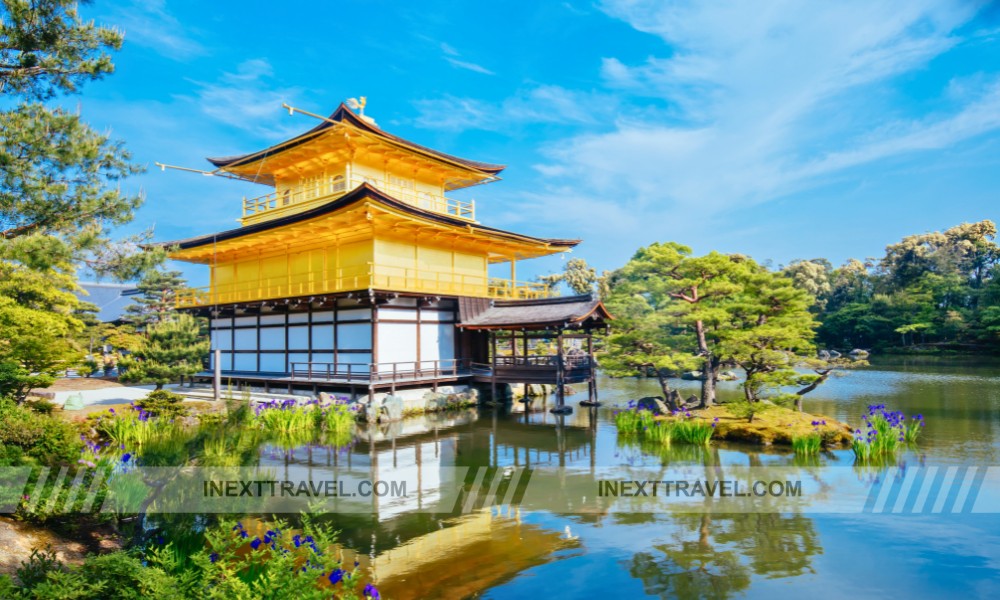
Similarly, the silver counterpart, Ginkaku-ji, with its meticulously raked sand gardens, emphasizes the more subdued aspects of Japanese aesthetics, wabi-sabi, which finds beauty in simplicity and impermanence.
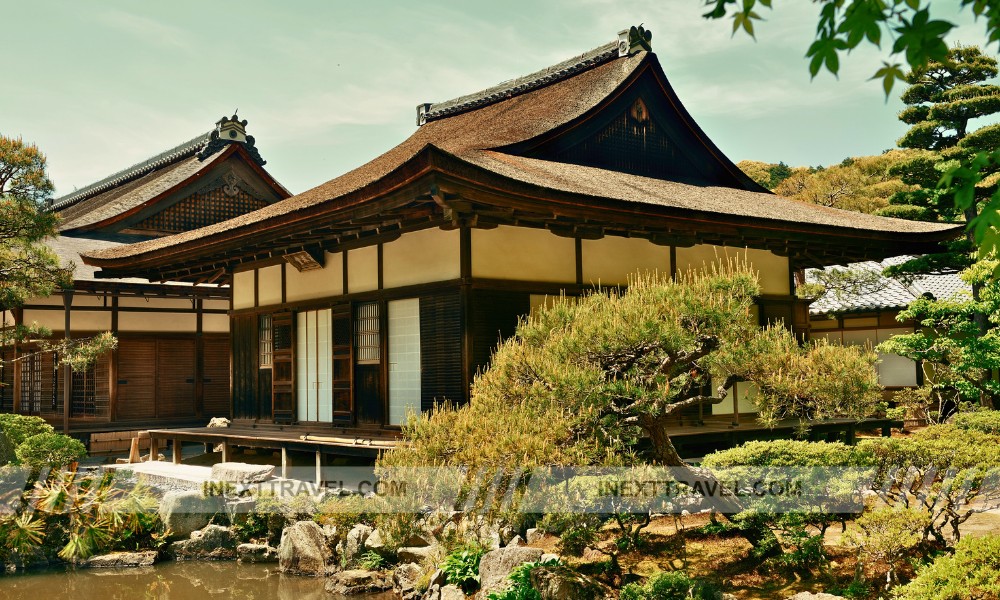
Seasonal changes in Kyoto convey the transient beauty of nature, celebrated through events like Hanami (cherry blossom viewing) and Momiji (autumn leaf hunting), which draw visitors from all over the world.

The Philosopher’s Path, a stone path lined with hundreds of cherry trees, becomes a tunnel of blossoms in spring. In contrast, the fiery colors of maple trees in places like Arashiyama and Tofuku-ji Temple create a spectacular autumnal display.
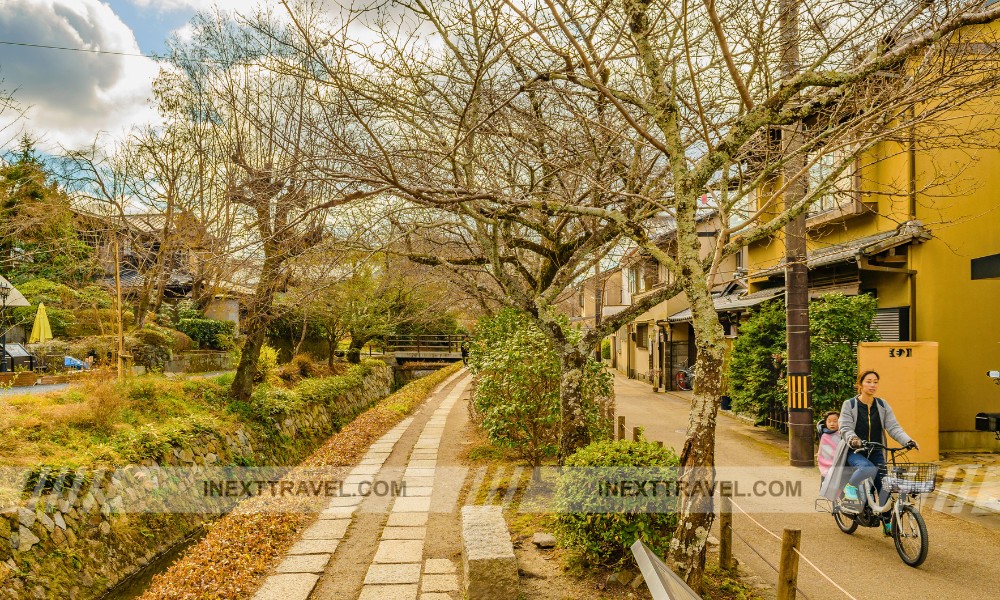
Festivals also play a significant role in the city’s cultural life. Events such as the Gion Matsuri, one of Japan’s most famous festivals, highlight elaborate floats and traditional music and performances, continuing a tradition that dates back over a thousand years.
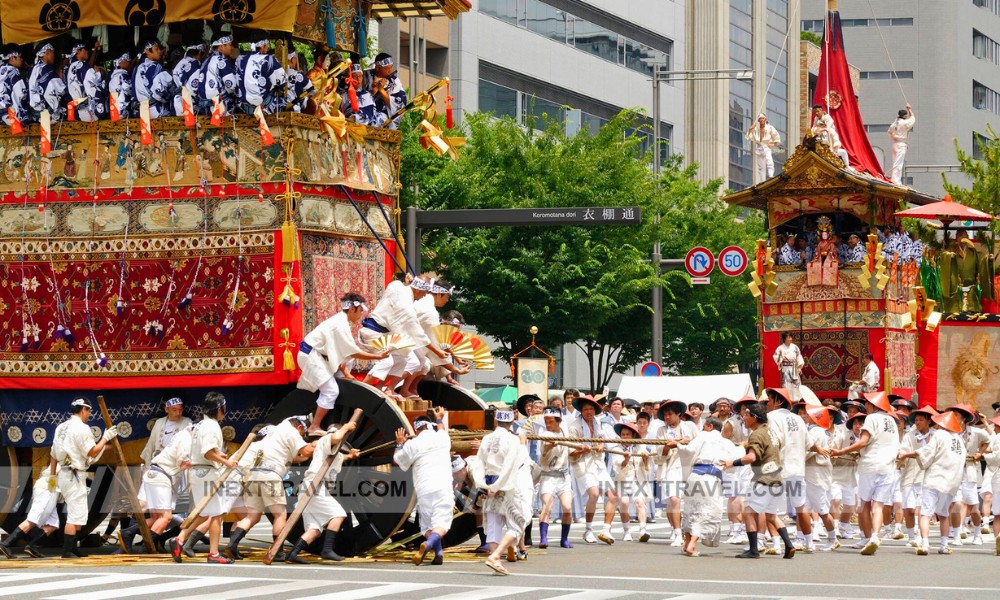
In essence, Kyoto is not just a city; it is a living museum of Japan’s imperial history and cultural heritage, preserved and alive in its temples, traditions, and natural beauty. It is a must-visit for anyone seeking to immerse themselves in Japan’s timeless beauty and classical culture.
Number 3: Osaka.
Landing at number 3, Osaka is the vibrant heart of the Kansai region, offering a dynamic mix of modernity and history. Known for its exuberant atmosphere and famously outgoing locals, Osaka provides a stark contrast to Japan’s more reserved and traditional cities. This city is a bustling hub that combines a rich historical tapestry with the rapid pace of contemporary life.
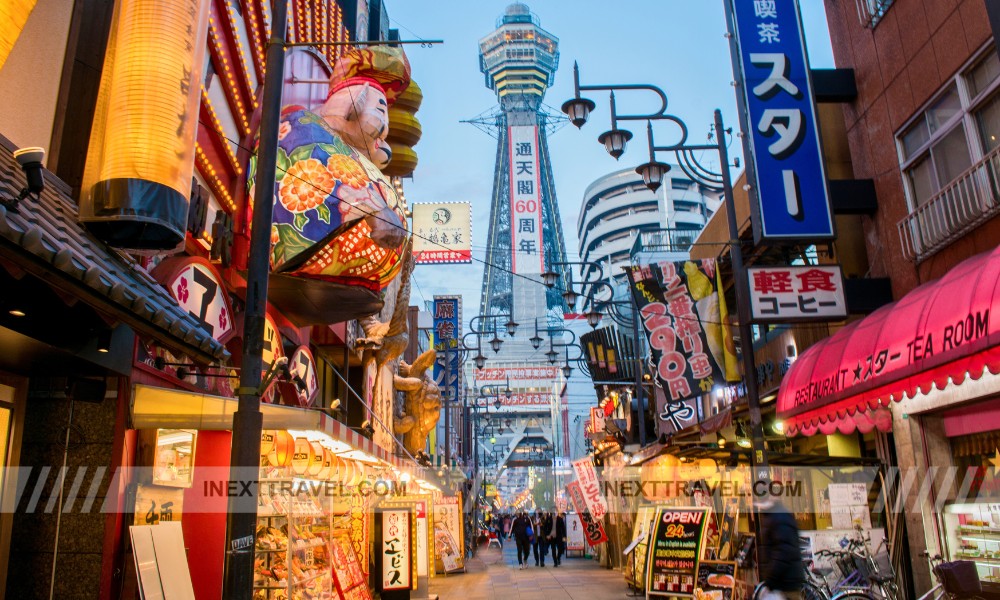
Osaka’s food scene is legendary, rightfully earning its nickname “the nation’s kitchen.” The city’s streets are lined with myriad dining options that showcase the depth of Japanese cuisine.
From casual street food vendors serving up takoyaki (octopus balls) and okonomiyaki (savory pancakes) to upscale restaurants offering meticulously prepared kaiseki meals, the culinary experiences in Osaka are both broad and immersive, sure to satisfy any palate.
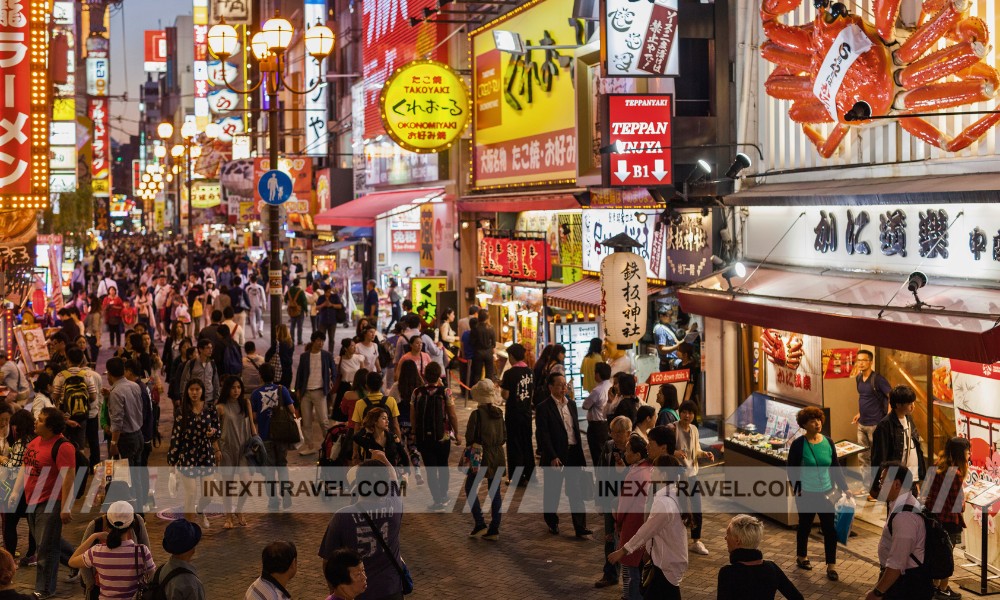
The historical centerpiece of Osaka is undoubtedly Osaka Castle. This striking structure, originally built in the 16th century, has played a significant role in Japan’s unification.
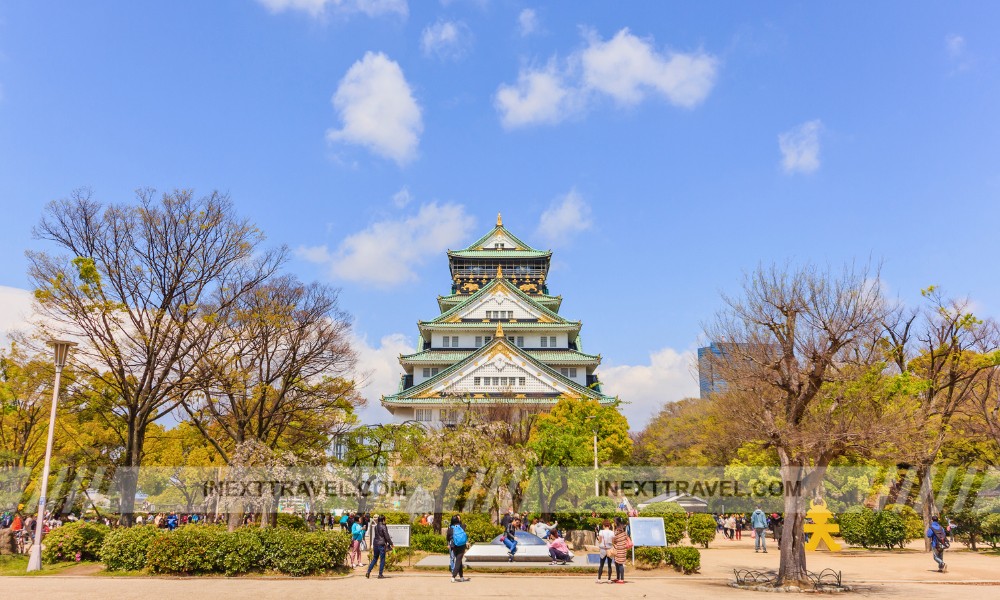
The castle has been restored several times throughout the centuries and now houses a museum that offers insights into Osaka’s historical importance and the life of Toyotomi Hideyoshi, the castle’s original constructor and one of Japan’s most revered historical figures.
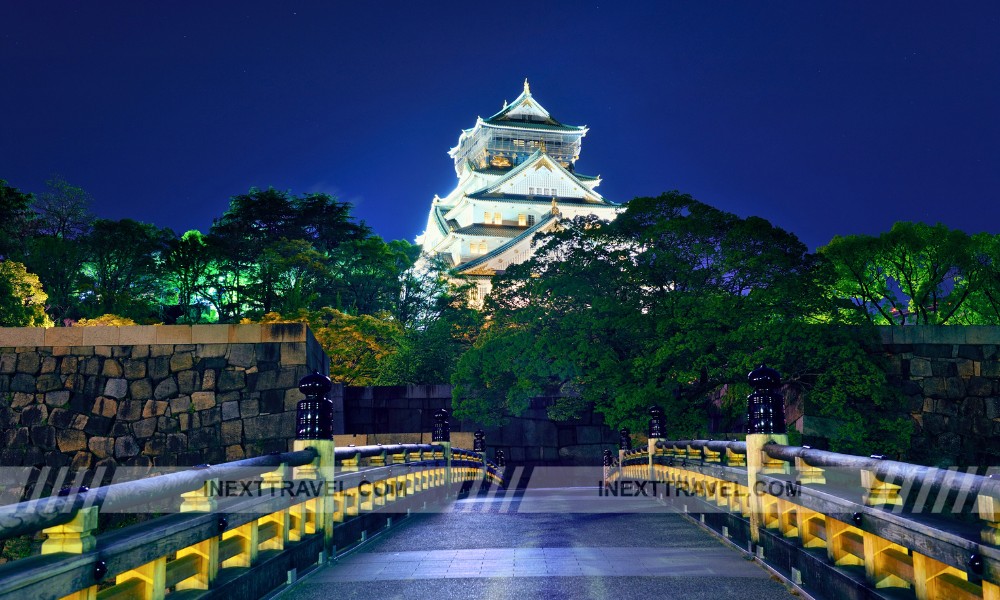
With its moats, stone walls, and hundreds of cherry trees, the surrounding park transforms into a picturesque landscape, particularly during cherry blossom season when it becomes one of the city’s prime viewing spots.
Additionally, Osaka’s urban charm is characterized by its lively shopping districts, such as Shinsaibashi and Namba, where the latest trends in fashion and technology are displayed in bustling arcades and luxury boutiques.
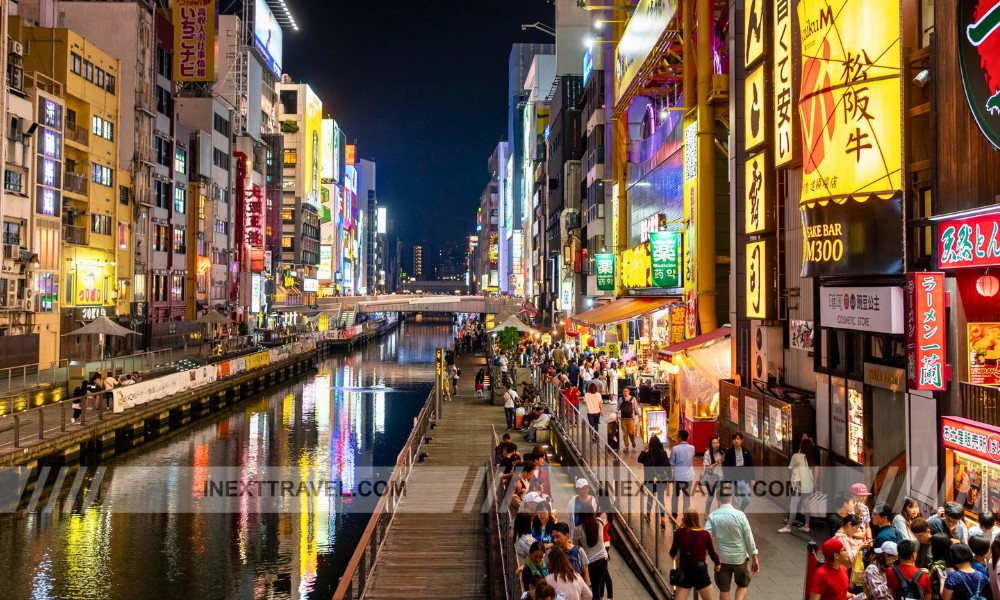
Along with the famous Dotonbori area, with its neon lights and gigantic animated billboards, these areas pulse with energy well into the night, offering endless entertainment and shopping opportunities.
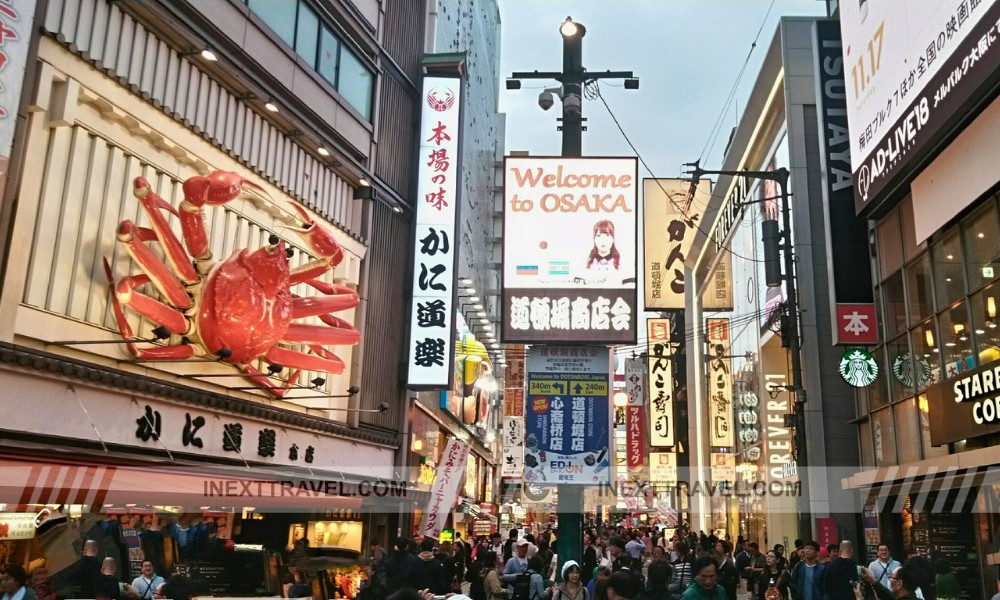
Osaka’s blend of lively cultural scenes, historical landmarks, and warm hospitality make it an essential destination for travelers seeking to experience the dynamic pulse of modern Japanese urban culture alongside significant historical settings.
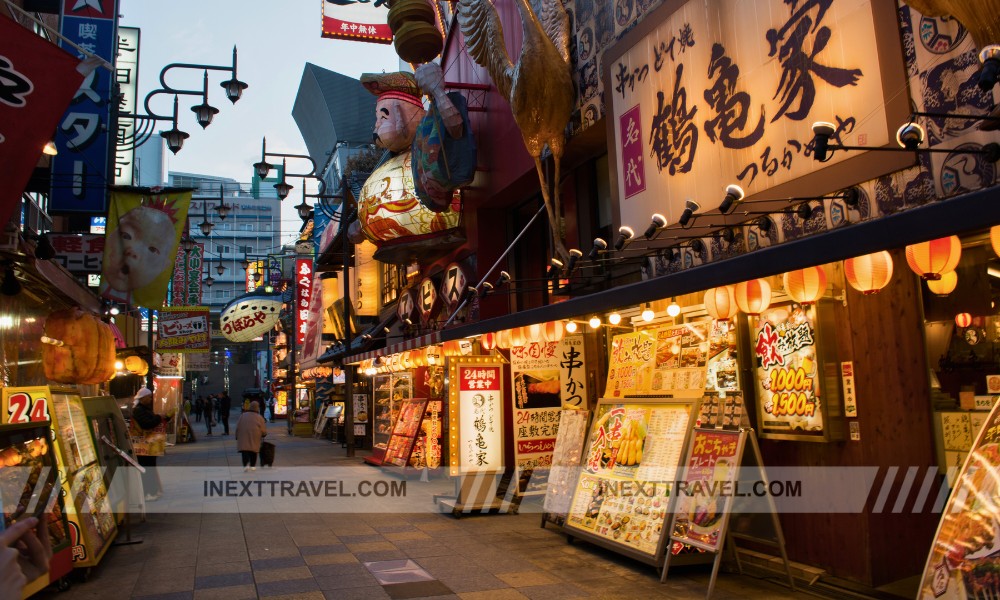
Whether exploring its historic sites, feasting on its culinary delights, or mingling with the locals, Osaka offers a vibrant atmosphere bound to leave a lasting impression.
Number 2: Tokyo.
Our runner-up, Tokyo, the capital city of Japan, exemplifies a fascinating city of contrasts, seamlessly blending centuries-old traditions with the pinnacle of modernity.
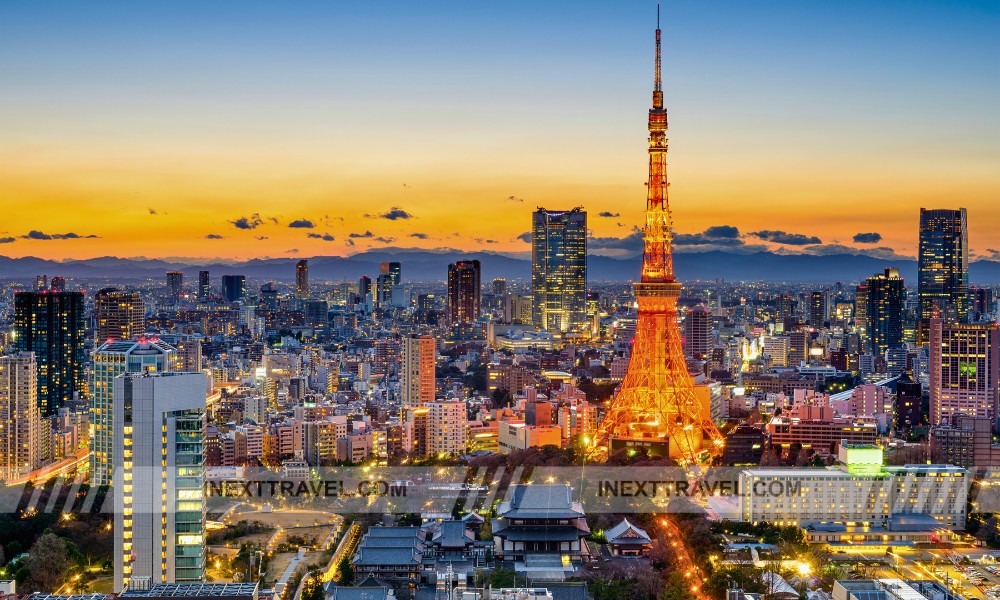
It’s a place where serene gardens and quiet temples coexist with towering skyscrapers and bustling city streets, offering a unique urban tapestry that captures the essence of Japan’s cultural dichotomy.
Tokyo’s landscape is dotted with numerous tranquil gardens, such as the Imperial Palace East Gardens. Visitors can escape the relentless pace of the city amidst historic ruins and immaculately maintained lawns.

Similarly, Shinjuku Gyoen offers a peaceful retreat blending traditional Japanese, English landscape, and French formal gardens. These green spaces serve as peaceful sanctuaries where time seems to slow down, starkly contrasting the surrounding urban environment.
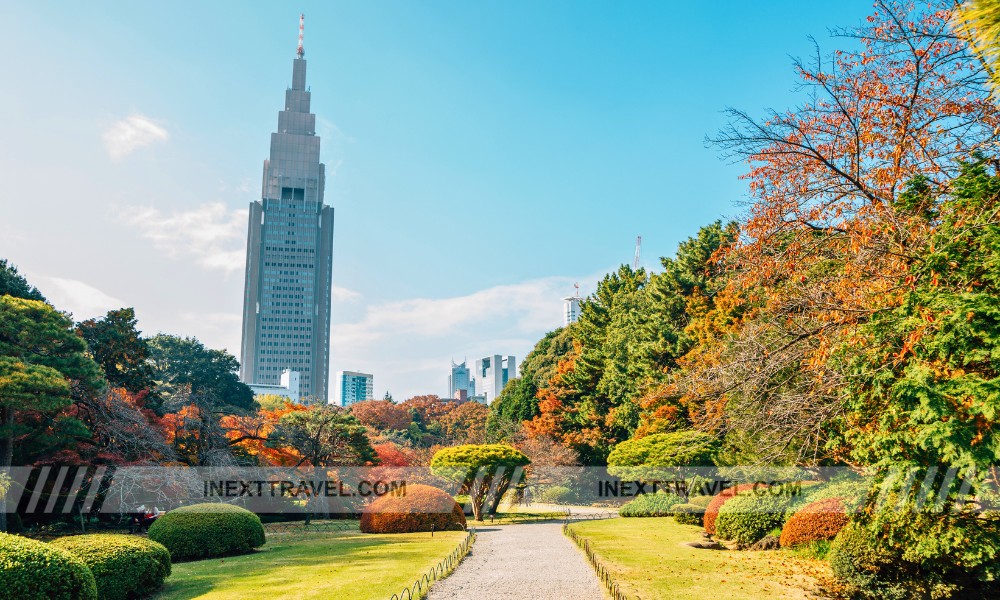
Amidst this bustling cityscape, traditional festivals (matsuri) play a pivotal role in the cultural life of Tokyo’s residents. Events like the Sanja Matsuri in Asakusa, which features portable shrine (mikoshi) parades, and the Kanda Matsuri, one of the city’s three major Shinto festivals, bring the community together in celebrations that are as vibrant and lively as any in Japan. These festivals offer a glimpse into the rich tapestry of Tokyo’s cultural heritage, showcasing traditional music, dance, and costumes.
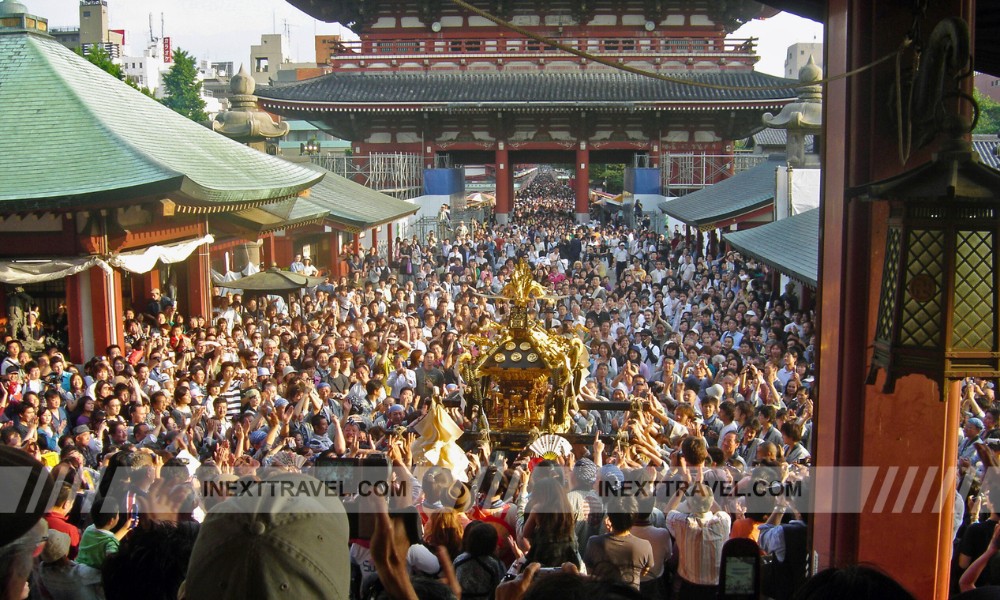
Tokyo is also a city of architectural marvels, from the historic Meiji Shrine, a haven of tranquility and reverence, to the ultra-modern Tokyo Skytree, a broadcasting and observation tower that offers panoramic views of the sprawling metropolis below.
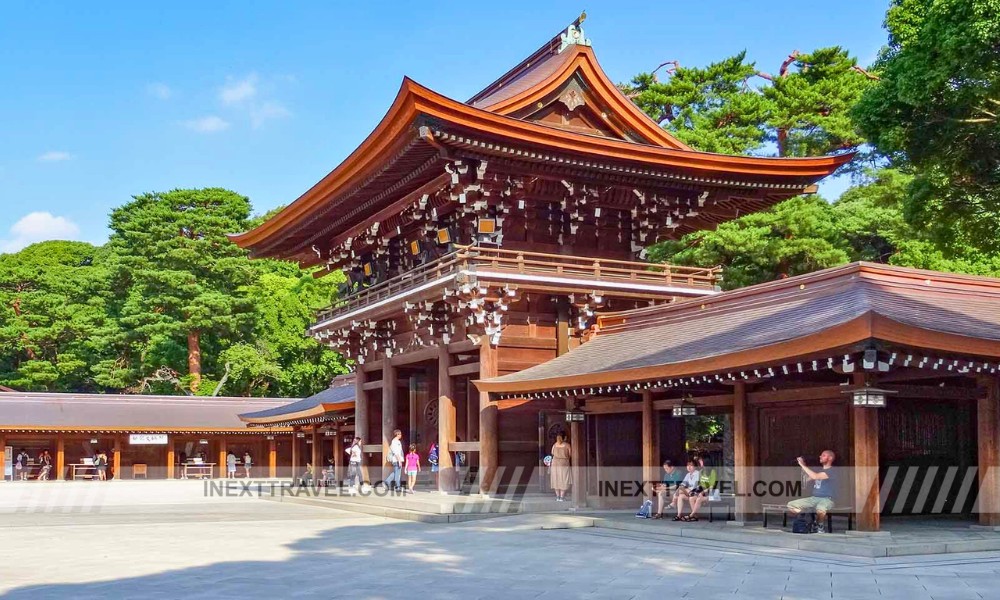
Areas like Akihabara glow with neon signs and are bustling with the latest technological gadgets. At the same time, Harajuku buzzes with Japan’s youth’s colorful and often eccentric fashion.
Shopping in Tokyo ranges from the high-end designer stores in Ginza to the unique, independently owned shops in Shimokitazawa.
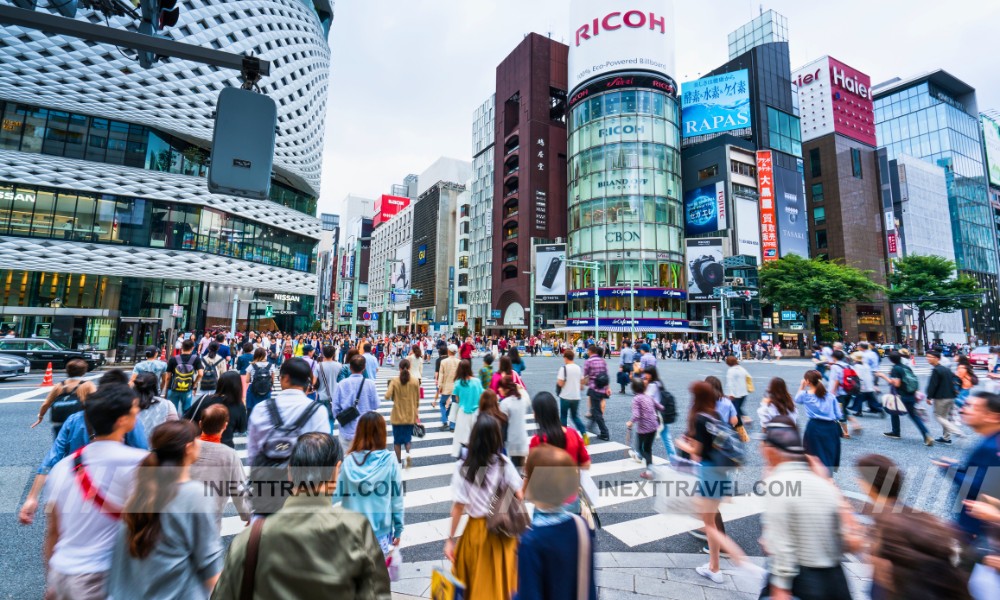
Foodies can explore culinary delights from Michelin-starred restaurants serving sushi prepared by world-renowned chefs to local izakayas offering casual dining experiences that are just as culturally enlightening.

Tokyo’s ability to maintain its cultural integrity while simultaneously pushing the bounds of innovation makes it an endlessly fascinating city where ancient traditions and future aspirations coalesce.
Whether exploring its historical elements or indulging in its modern-day luxuries, Tokyo offers a dynamic environment that will captivate any visitor.
Number 1: Mount Fuji.
At number 1, Mount Fuji is the quintessential symbol of Japan’s natural beauty and spiritual significance. This majestic mountain, revered as a sacred site for centuries, is the highest peak in Japan at 3,776 meters and one of the most recognizable mountains in the world due to its nearly perfect symmetrical cone. Its singular presence and striking aesthetic have inspired artists, poets, and pilgrims alike, making it a central figure in Japanese culture and identity.
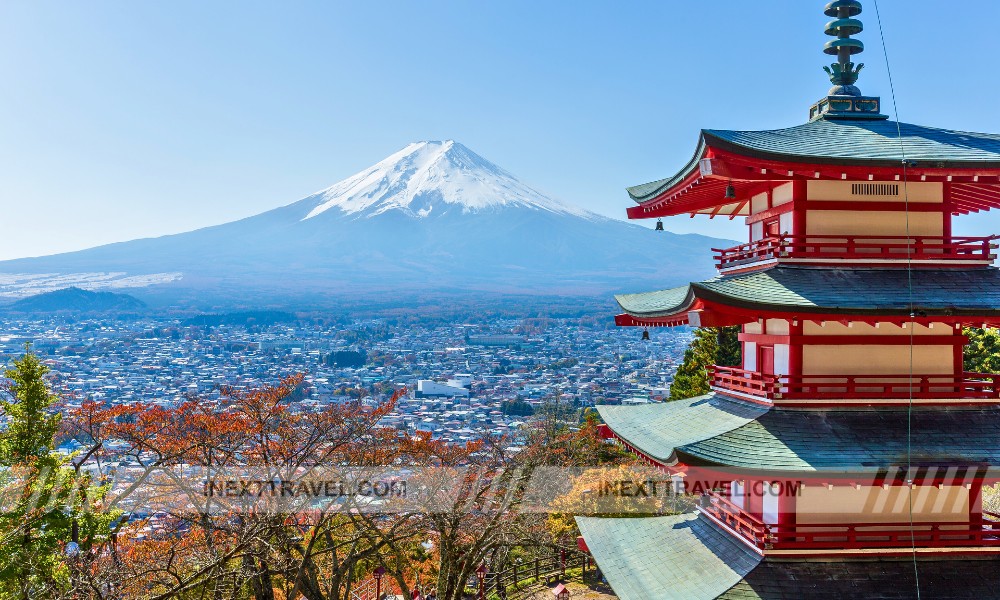
Mount Fuji is an active stratovolcano, which last erupted in the early 18th century and is situated on the border between Yamanashi and Shizuoka prefectures, just south of Tokyo. Its snow-capped summit is visible from Tokyo on clear days and is often depicted in art and photography as a symbol of serenity and endurance.

The mountain is surrounded by five lakes, known as the Fuji Five Lakes, which enhance its scenic beauty and offer various recreational activities such as boating, fishing, and hiking. This makes the area a popular destination for international tourists and Japanese nationals.
Climbing Mount Fuji is popular, especially during the official climbing season in July and August. Many undertake this climb not just as a physical challenge but also as a spiritual journey, following in the footsteps of the ancient pilgrims. The ascent, typically started at night to reach the summit in time for sunrise, is a powerful experience, offering breathtaking views and a profound sense of accomplishment.
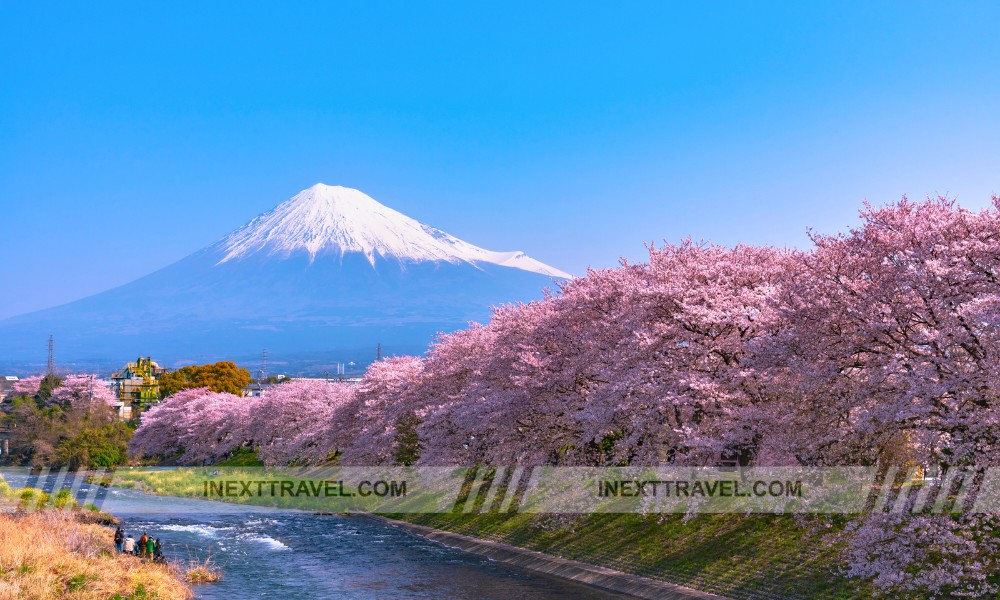
Mount Fuji was added to the World Heritage List as a Cultural Site in 2013. It is recognized for its natural beauty and historical and cultural significance. It has been a muse for countless works, including the famous woodblock print series “Thirty-six Views of Mount Fuji” by Hokusai, which has had a lasting impact on depicting mountain landscapes in art.
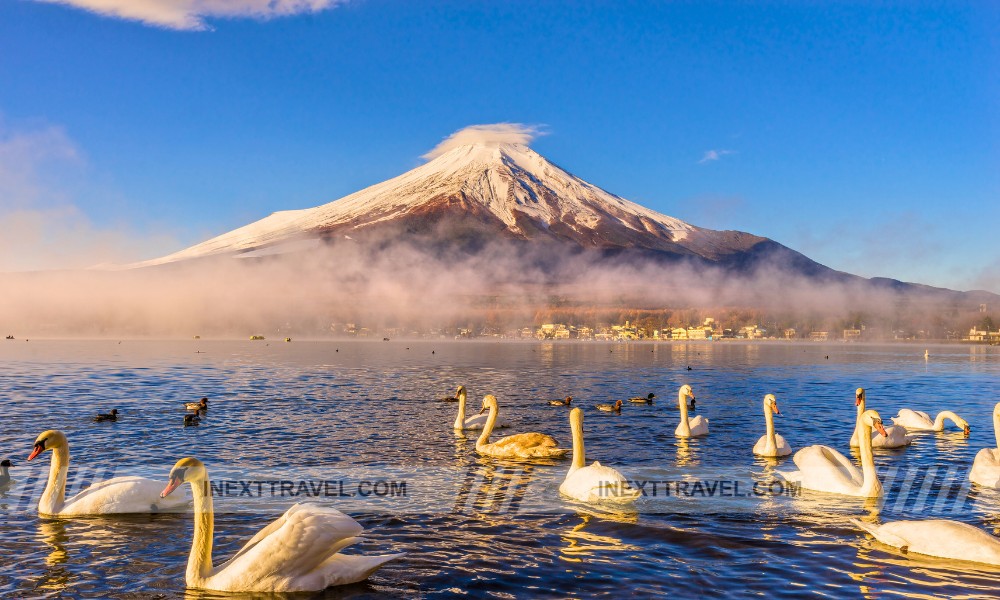
Mount Fuji’s enduring appeal goes beyond its physical beauty, embodying more profound spirituality, artistry, and identity themes. It remains a potent symbol of Japan’s natural majesty and a source of inspiration and reverence for people worldwide.
Conclusion
As we conclude our journey through Japan’s ten best beautiful places, it’s clear that this nation is steeped in a profound blend of natural beauty and cultural heritage.
Each destination we’ve explored offers its unique story and aesthetic, from the tranquil gardens of Kanazawa to the vibrant energy of Tokyo and the majestic tranquility of Mount Fuji.
These places showcase Japan’s diverse landscapes and embody the spirit of its people and their deep respect for nature and history.
Whether you seek spiritual solace at ancient temples, adventure in vast, untouched natural settings, or a deeper understanding of Japan’s rich cultural tapestry, these destinations provide a window into the country’s soul.
We hope this guide inspires you to explore these stunning locations firsthand. Each is ready to offer you a piece of Japan’s heart and heritage.
Safe travels, and may your journey be as enriching as the landscapes are beautiful.